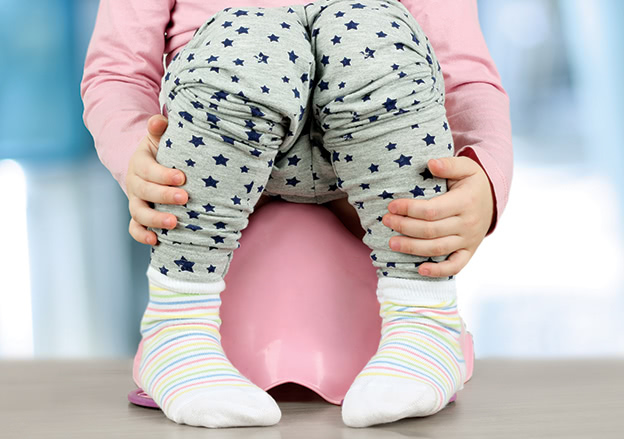
Section
Starting to Use the Toilet
Teaching your child to use the toilet is a big step. It is important to wait until he is ready. Most children are ready between ages 2 and 3. Encourage your child, but do not force him. It may take 3 to 6 months before your child learns to use the toilet during the day. Staying dry all night can take longer. Be patient. Remember, over time your child will have fewer accidents.
Where to Find Help
Information from the American Academy of Pediatrics on children’s health, safety, and well-being.
Things You Can Do
Start Slowly
Start by having your child sit on the potty at the same time each day.
Try several times a day and at bedtime.
Try when he shows signs that he needs to urinate or have a bowel movement.
Let him sit for several minutes.
Let him get up when he is ready.
Do not expect him to use the toilet right away. Reward him with praise and hugs when he does.
Tips for Helping Your Child Learn
Dress your child in loose pants that are easy to pull down and up. Or use pull-up diapers or training pants.
Get a children’s book about learning to use the toilet and read it with your toddler.
It is helpful for mothers or sisters to show little girls, and fathers or brothers to show little boys.
Teach girls to wipe from front to back to prevent infections.
Decide what words you will use for your child’s body parts, urine, and stool. It is best to use common terms, like “pee” and “poop.”
Toilet Training and Child Care
Some child care programs want children to be able to use the toilet. Do not rush your child’s toilet training to get him into child care. Find another program or wait a few months.
Look for Signs That Your Child Is Ready
His diapers are dry for at least 2 hours or dry after his naps.
His bowel movements are regular.
His face or posture shows when he is ready to urinate or have a bowel movement.
He fusses or asks to be changed when his diaper is wet or dirty.
He can walk to the bathroom, help undress himself, and follow simple directions.
He asks to use the potty or wear “big kid” underwear.
Expect Accidents
Have extra underwear, pants, socks, shoes, wipes, and plastic bags on hand at child care and on outings. If your child has an accident, do not punish him. You can say, “That’s OK. Next time, try to let me know when you have to go so we can use the toilet.”
Choose the Right Time To Start
Try not to start teaching your child to use the toilet when there are big changes in his life. Try to avoid stressful times, like moving, the birth of a sibling, changes in child care, divorce, or a family trip. Wait until your routines are more normal before you start.

Some children feel safer on a low potty chair with their feet on the floor. You can also buy a small seat that fits inside the toilet seat and have your toddler use a step stool.
At Night
Many children still need a diaper at night, even when they use the toilet during the day. Some children wet at night until age 6 or 7 or even older. If a parent wet the bed as a child, the child may also. Do not make your child feel ashamed.
To help prevent accidents at night, limit how much your child drinks after dinner. And make sure your toddler uses the toilet just before bedtime. If you are worried, talk to his doctor.